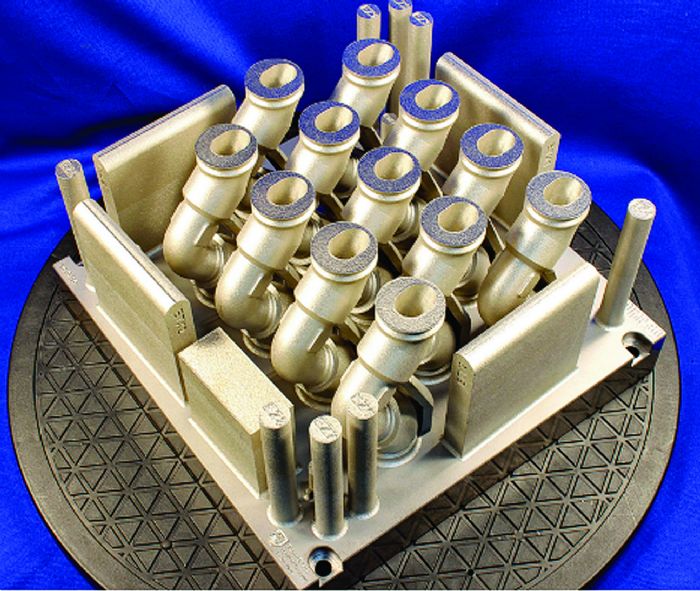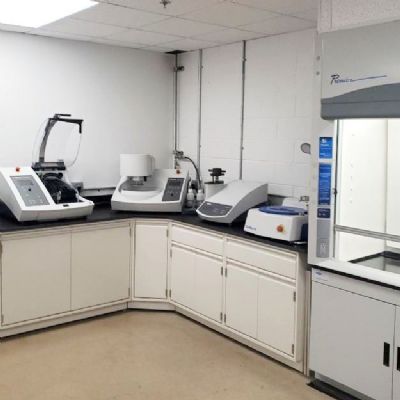AMNOW Challenge: LPBF of Type 316L Stainless Steel
The latest AMNOW project, called the AMNOW Challenge, focuses on laser powder-bed fusion (LPBF) of Type 316L stainless steel. Specifically, the challenge posed to the research and development community is to analyze process and property data from multiple LPBF builds, to identify trends, predict properties, and find anomalies in manufacturing data.
 “The goal for the AMNOW Program, which ends Sept. 30, 2022, is to whittle down the risk of implementation for U.S. Army applications across a range of 7 AM material and process combinations. L-PBF of Type 316L stainless steel is one of those combinations,” explains Kevin Slattery, who leads the AMNOW program engineering team and Principal Advisor, metallic additive and metals manufacturing with The Barnes Global Advisors. “At the end, the Army will also have extensive knowledge and data regarding the capabilities three of more suppliers for each combination when they need to procure these types of parts and materials to help them overcome supply-chain and spares issues.” The AMNOW Challenge builds upon this by looking at the art of the possible when AM is combined with AI and data analytics.”
“The goal for the AMNOW Program, which ends Sept. 30, 2022, is to whittle down the risk of implementation for U.S. Army applications across a range of 7 AM material and process combinations. L-PBF of Type 316L stainless steel is one of those combinations,” explains Kevin Slattery, who leads the AMNOW program engineering team and Principal Advisor, metallic additive and metals manufacturing with The Barnes Global Advisors. “At the end, the Army will also have extensive knowledge and data regarding the capabilities three of more suppliers for each combination when they need to procure these types of parts and materials to help them overcome supply-chain and spares issues.” The AMNOW Challenge builds upon this by looking at the art of the possible when AM is combined with AI and data analytics.”
The three suppliers providing materials and process data for the AMNOW Challenge are ATI Specialty Metals, Penn United and Innovative 3D Manufacturing. Each already has completed several AM builds of fuel-system elbows currently being conventionally manufactured for use in U.S. Army rotorcraft. Researchers at Penn State University developed the original parameter sets for the build as well as test coupons. The project then transitioned over to these three suppliers to further develop production-representative builds—more elbows and fewer test coupons. All of the builds have undergone extensive testing—tensile and fatigue tests, as well as composition, metallography and density testing.
The Project’s End Goal
“To tie the AMNOW Challenge to the overall program,” adds Ashley Totin, AMNOW Program Manager and senior project engineer for NCDMM, “we are creating a secure bidirectional communication space to allow suppliers to download contracting documents, and TDPs (technical data packages) and upload manufacturing process information. That’s the end goal of the program, so that the Army can come in, create a job that goes out to the suppliers electronically with the TDP, and the supplier builds the parts. However, the contract is not only for the hardware deliverable; there’s also a data deliverable, including digital data from the printing machines that becomes an operations report submitted electronically into the secure government cloud space called AMIP—advanced manufacturing intelligence platform.”
AMIP data, as outlined in a project brief, include several mechanical properties—tensile, fatigue strength, relative density, etc.—as well as radiographic data, thermal-processing history, feedstock certification and much more. The entire RFQ, bid and contracting process will mimic the actual DoD contracting process, and suppliers will have access to a low-cost, open-standards-based data acquisition and control system.
For the AMNOW Challenge, the five semifinalist data analytics entities, selected in mid-February, will take the data sets provided by the three builders, correlate them, discover which builds created anomalies and what data correlates to that, and finally recommend process and parameter changes in order to improve their results. The five down-selected semifinalists:
- University of Waterloo
- Applied Optimization/Penn State University Applied Research Laboratory
- Northeastern University
- Cognistx
- Addiguru.
Each will present, in late April, their concepts for improving productivity and quality to an evaluation panel with representatives from across industry, the DoD and from NIST. The panel will then select two winners that will receive funding from the AMNOW program and work with the three builders to refine their processes.
“We’re not really looking to change the part design,” says Slattery, “since the goal is to develop a solution to address supply-chain issues and manufacture spare parts. There’s really little or no design freedom here, we just want good data correlation and process predictions.”
New AMS Specs
From the AMNOW program, Slattery and Totin expect to generate at least eight new SAE AMS (Aerospace Materials Systems) specifications, “three from the 316L stainless-steel project alone,” says Slattery. Some are powder specs, others are material or part specs—acceptance criteria, thermal processing specs, and actual statistically based mechanical-property minimums. “At the same time, we’re working to help develop the supply chain,” Totin adds, “showing not only we make the fuel elbows but that an Army design or procurement authority could qualify machines. So, we are also supporting an AMS machine-qualification specification using three simulated qualification builds.”
“Early in the AMNOW program,” Totin explains, “the team came to realize that there is no industry standard for reporting the data coming from an AM machine. Enter AMNOW partner LECS Energy, which is providing its Learning Integrated Manufacturing System to collect process data during the builds.”
“LECS CEO Nat Frampton has been working with the machine builders to try to develop a standard for the data coming from the machines,” Totin says, “to lower the costs for the small manufacturer.” 3DMP
Technologies:
 Brad Kuvin
Brad Kuvin “Keeping mission-critical supply chains running is nothing new to military operations. When contracted manufacturing partners struggled to overcome pandemic-induced backlogs, raw materials are stuck in ports, and chip shortages halt production lines, the U.S. military turns to 3D printing to get essential parts and components.”
“Keeping mission-critical supply chains running is nothing new to military operations. When contracted manufacturing partners struggled to overcome pandemic-induced backlogs, raw materials are stuck in ports, and chip shortages halt production lines, the U.S. military turns to 3D printing to get essential parts and components.”





 “The goal for the AMNOW Program, which ends Sept. 30, 2022, is to whittle down the risk of implementation for U.S. Army applications across a range of 7 AM material and process combinations. L-PBF of Type 316L stainless steel is one of those combinations,” explains Kevin Slattery, who leads the AMNOW program engineering team and Principal Advisor, metallic additive and metals manufacturing with The Barnes Global Advisors. “At the end, the Army will also have extensive knowledge and data regarding the capabilities three of more suppliers for each combination when they need to procure these types of parts and materials to help them overcome supply-chain and spares issues.” The AMNOW Challenge builds upon this by looking at the art of the possible when AM is combined with AI and data analytics.”
“The goal for the AMNOW Program, which ends Sept. 30, 2022, is to whittle down the risk of implementation for U.S. Army applications across a range of 7 AM material and process combinations. L-PBF of Type 316L stainless steel is one of those combinations,” explains Kevin Slattery, who leads the AMNOW program engineering team and Principal Advisor, metallic additive and metals manufacturing with The Barnes Global Advisors. “At the end, the Army will also have extensive knowledge and data regarding the capabilities three of more suppliers for each combination when they need to procure these types of parts and materials to help them overcome supply-chain and spares issues.” The AMNOW Challenge builds upon this by looking at the art of the possible when AM is combined with AI and data analytics.” 

 Video
Video